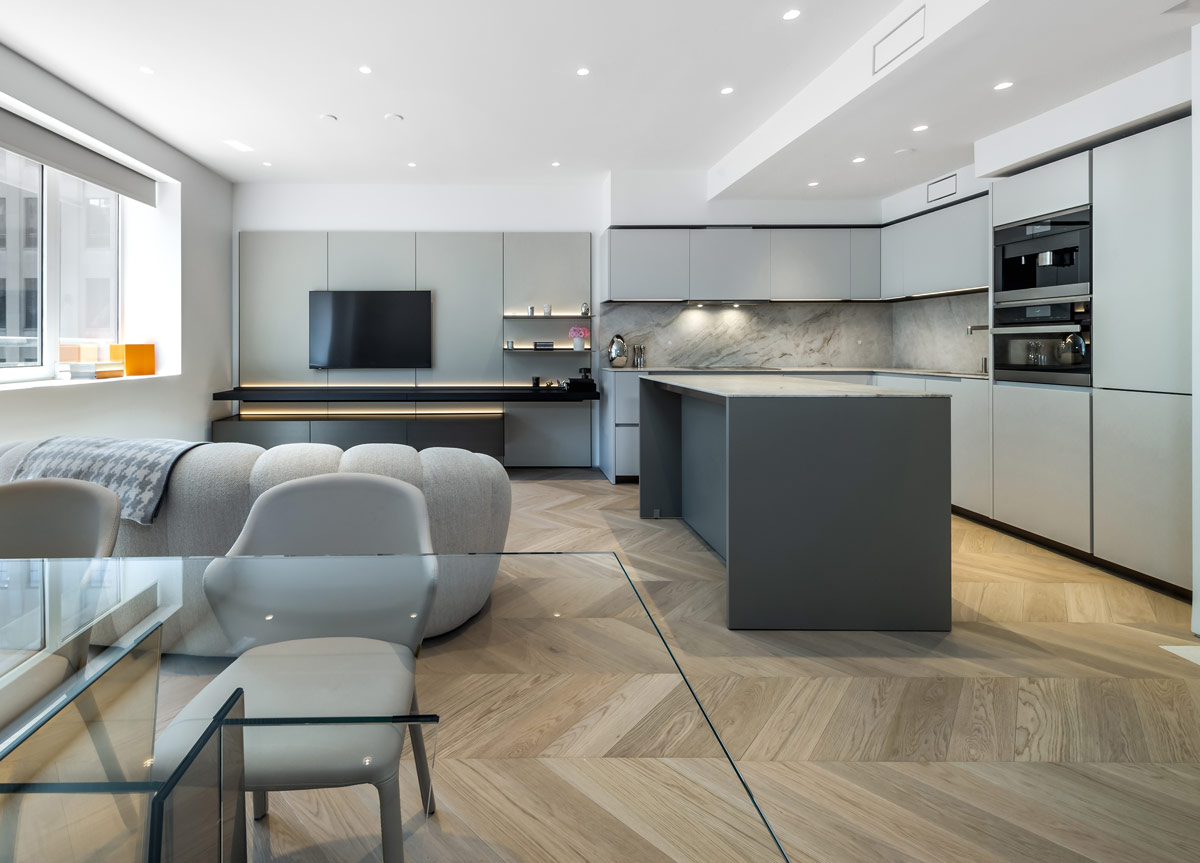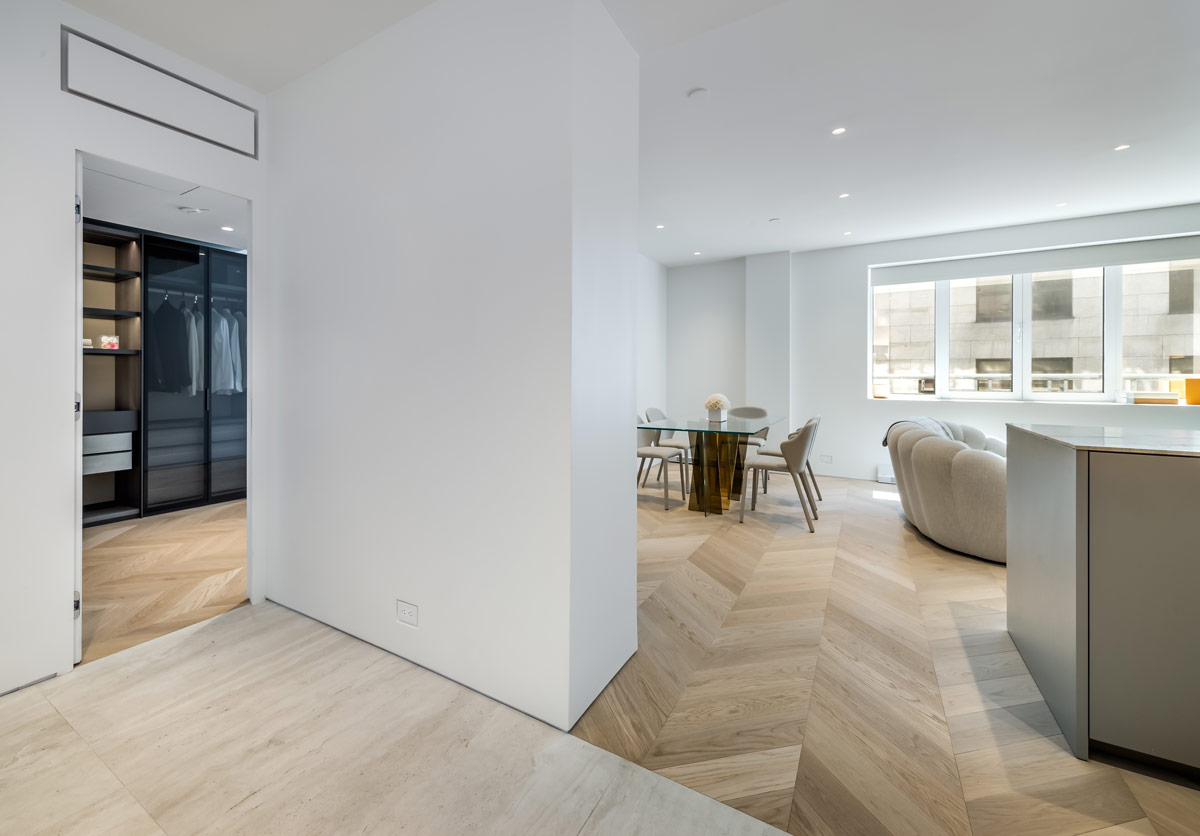When we think about interior design, our minds often jump to statement walls, curated art pieces, or perfectly chosen furniture. Yet, one of the most significant elements of any space—a feature that can set the tone just as boldly as a painting—often gets overlooked: the floor. In our quest to highlight unique expressions of contemporary culture, we’ve discovered that flooring can be both a practical foundation and a creative canvas for artistic self-expression.
Below, we explore how cultural influences shape modern flooring trends, the rise of sustainable materials, and why flooring might just be the hidden hero of interior design.
The Cultural Influence on Flooring Trends
As with music, fashion, and visual arts, interior design—including flooring—also changes with cultural trends. Modern design currents (minimalism, mid-century modern, postmodernism with its bold patterns) are reflected on the floors we walk on. Today, people and designers come up with different global styles (original phrase “come up for different global styles” may sound unclear):
- Minimalism & Scandinavian: Clean, light wood and pale colour schemes create a calm and spacious atmosphere.
- Wabi-Sabi: Inspired by the Japanese love of things in their natural state; distressed wood, soft finishes, and warm colours.
- Maximalism & Retro Revival: Bright and bold tile colours embrace the spirit of the 60s and 70s, adding character to a room.
Through this connection of design with art and culture, flooring becomes more than just a utility item—it becomes a personal statement and a sign of what one appreciates.

Sustainability and Innovation Underfoot
As people become more conscious of the environment and its problems, eco-friendly and innovative flooring solutions are becoming popular. Some of the environmentally friendly materials for flooring include bamboo, cork, reclaimed wood, and responsibly sourced vinyl or laminate. Manufacturers are also developing low-impact production processes—such as reducing waste and using recycled content—to meet the needs of the green design-conscious consumer.
These materials not only help in reducing the carbon footprint but also provide a unique, artisanal touch to a room. Natural textures, organic patterns, and subtle colour variations can help create a sense of depth and bring a feeling of nature into a space.
Designing from the Ground Up
In this case, the term ‘flooring’ can be used literally or figuratively to describe the foundation of your interior design. Do not treat your floors as a secondary consideration; rather, formulate your design around them:
1.Harmonizing with Existing Décor
If you already have a favourite piece of artwork or statement furniture, choose flooring that enhances those focal points. A neutral wood or stone floor can provide a subtle backdrop, while a patterned tile or richly stained hardwood can become the centre of attention.
2. Using Colour and Pattern
Do not be afraid to experiment. Geometric tiles, bold colour choices, or intricate parquet patterns can add a layer of artistic intrigue and shape the atmosphere of an entire space.
3. Mixing Textures
Use rugs, mats, or transitions between different flooring materials (for example, wood meeting tile) to create visual interest. This can help guide how people move through a space or experience its different zones by varying the feel of the area.
Spotlight on Floor Warehouse
For anyone seeking an expert partner in transforming floors into a creative statement, Floor Warehouse stands out as a trusted resource. Their extensive range of modern flooring options, from innovative Versailles laminates to responsibly sourced hardwood, reflects current trends while offering reliable functionality. By combining aesthetic sensibility with technical expertise, Floor Warehouse supports designers and homeowners in realising their most ambitious interior visions—be it a serene, minimalist sanctuary or a vibrant, artful dwelling.
Looking to the Future
As culture and art evolve, so does flooring design. With the development of technology and the growing concern for sustainability, we can expect new materials, patterns, and designs that embody personalization. Flooring can be practical and aesthetically pleasing in every way: it supports you underfoot and can also be an integral part of your interior design.
So, the next time you renovate a space, don’t forget to look down. Your floor may be the key to the amazing design you’ve always wanted, and Floor Warehouse is making it easier than ever to turn that vision into reality.
From cultural trends to sustainable materials, flooring has long been an underappreciated frontier of artistic expression. Through the integration of form, function, and creativity, it is possible to create a space that reflects one’s personality and the influences that shape it. After all, a room is not defined by its walls, but by the floor that people walk on every day.


